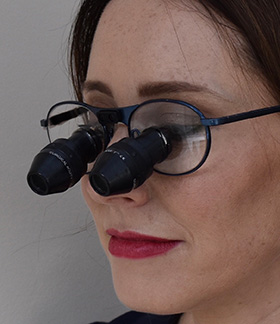You should expect to be in hospital for 4-7 days.
On the day of surgery you will need to come into hospital starved in preparation for a General Anaesthetic. I will draw some markings on you to be used as a guide for surgery. You will also see the anaethetist who will discuss the anaesthetic and post-operative pain management plan.
Items you should bring to hospital:
- Slippers
- Dressing Gown
- Nightclothes
- Post-op bra
- Compression Garment (see below)
- Toiletries
Your bra will need to be supportive and without wires, ideally with a front fastening. If you need guidance this can be discussed with your breast care nurse. The bra is worn from the day of surgery, day and night for 6 weeks. This gives your reconstructed breast support.
Please do not bring in any jewellery and remove rings from the operated side because your hand is prone to swelling after the operation.
After your operation you will be closely monitored for the first 48 hours. The operation will take 4 to 8 hours depending on whether you are having one or two TUG flaps. You will probably feel drowsy until the next day so it is advisable for your next of kin to telephone the ward before visiting.
When you wake up you will have a urinary catheter, a drain in each reconstructed breast and a drain in each donor site (thigh area).
After your operation you will stay in bed for the first night. On the first day after the operation you will stand out of bed, even if it is only for a short period of time. This helps to open your airways up following the long anaesthetic. At this stage many ladies feel it is too uncomfortable to sit on the wounds at the back of the thigh therefore we encourage you to do a few short episodes of standing with a few steps at this stage.
You will have some tape dressings on the wounds and will put the bra on before getting out of bed to support the reconstruction. You will have a warming blanket (bair hugger) on for the first 24-48 hours after the operation. It is important to keep the area warm to maintain a good blood supply to the
flap.
Your thigh wound may feel tight following surgery. To improve comfort and aid healing your legs should be kept gently apart whilst in bed and slightly elevated.
The nursing staff will make regular observations including blood pressure, temperature, flap observations, drip monitoring and oxygen monitoring. The flap is closely observed during the first 48 hours to ensure that any problems with the blood flow are picked up early and dealt with in a timely fashion. If any problems with blood flow to the flap or other problems such as bleeding occur it would be necessary to return you to theatre to investigate the cause.
Please bring into hospital a pair of tight-fitting cycling shorts or Spanx type pants that fit from waist to knee. On the day following surgery the nurses will help you put on your “compression garment”. This should be worn continuously until your 6-week post-op review, only removing for showering or dressing changes.
During your hospital stay our physiotherapists will see you on several occasions. The aims of physiotherapy following breast reconstruction are to prevent you developing breathing problems such as chest infections, to help get you mobile again, to help you regain strength and movement in your shoulder and arm and to advise you on returning to your normal daily activities.
On the first post-operative day you will be helped to stand up next to your bed, you may even do a few steps. On the second post-operative day you will start walking short distances. When moving you should keep your legs hip distance apart and be careful not to have your knees to far apart. As you start moving there will be a little soreness and pulling at the wounds but do not worry they will not split. You may find it difficult to sit initially due to pressure on your donor site but you can stand and walk then return to bed until this area is comfortable which is usually day 3. You will increase this distance you walk on day 3 and aim to do stairs on day 4 before discharge the same day.
